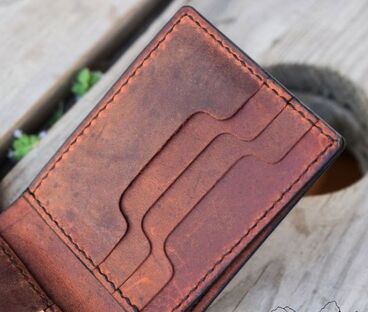There are 4 species of Kangaroo
Macropus rufus, M. giganteus, M. fuliginosus, M. antilopinus
Current Conservation Status For Kangaroo:
Wide Distribution
|
SIZE
Height: 3 - 8ft Weight: 40 - 200 Pounds |
LIFESPAN
Wild Lifespan: Up To 8 Years Captive Lifespan: Up To 25 Years |
|
DIET
Herbivorous - eating a wide range of plants. The animal has a chambered stomach, similar to that of cows, to help with the digestion process. A kangaroo can survive for long periods without drinking water, as it is hydrated by the moisture in the vegetation it consumes. |
HABITAT & RANGE
Native to Australia, Tasmania and nearby islands. - Woods and bushland, as well as grassland, savannas, forests, and scrubland. The species is highly adaptable and can live successfully in a wide range of habitats. |
Why Kangaroo Leather?

It is up to 10 times stronger than cowhide in the same weight (thickness), and 50 times stronger than some sheepskin.
Kangaroo leather has numerous qualities, including a tensile strength that exceeds that of any other domestic animal leather, a naturally fine grain, and a light weight.
The majority of "leather" used in the modern market is altered or altogether fabricated and given a synthetic finish, making it uniform and "market ready". Conversely, Kangaroo often has no need to be altered unless a specific finish (metallic/textured) is desired.
Kangaroo leather has numerous qualities, including a tensile strength that exceeds that of any other domestic animal leather, a naturally fine grain, and a light weight.
The majority of "leather" used in the modern market is altered or altogether fabricated and given a synthetic finish, making it uniform and "market ready". Conversely, Kangaroo often has no need to be altered unless a specific finish (metallic/textured) is desired.
Human/Wildlife Conflict
Man vs Marsupial
There are more than twice as many kangaroos as people in Australia, according to official government figures, and many Aussies consider them pests.
There are countless viral videos of kangaroos harassing people and domestic animals. Bucks (male kangaroos) can be territorial and aggressive. Does that really justify the culling and use of this species for leather goods?
There are countless viral videos of kangaroos harassing people and domestic animals. Bucks (male kangaroos) can be territorial and aggressive. Does that really justify the culling and use of this species for leather goods?
Products Featuring Kangaroo Interior
Mercy Kill
Annual Kangaroo Cull

by Steven TRASK - MAY 10, 2023
Australia told to shoot kangaroos before they starve
Australia's kangaroos could die in "catastrophic" numbers if a population boom is left unchecked, ecologists have warned, while backing the industrial-scale culling of the marsupials.
"The last drought we estimated that 80 or 90 percent of the kangaroos in some areas died," she told AFP.
"They are starving to death—going into public toilets and eating toilet paper, or lying on the road starving while their joeys are trying to feed," she added, referring to events from the last population boom.
Moseby said the kindest way to save kangaroos from this fate was to shoot them, and harvest the meat, as a way of keeping numbers in check.
"It keeps the numbers down so that when we do get drought we don't get these welfare issues," she said.
"If we saw them as a resource and managed them like that, we wouldn't get the catastrophic deaths that we see."
Each year, as many as five million kangaroos are shot as part of a homegrown industry, which harvests their carcasses for meat, pet food and leather.
Dennis King from the Kangaroo Industry Association of Australia believes the country is on the cusp of another kangaroo boom.
"After three years of La Nina right down the east coast, we've seen the perfect growth scenario for kangaroos over the next couple of years," he told AFP.
"The breeding cycle really speeds up."
King said the national kangaroo population fell under 30 million following a crippling drought in the early 2000s, but could soon rebound to as many as 60 million.
Animal rights activists have denounced the commercial cull
as a "cruel slaughter", pressuring global sportswear giants such as Nike and Puma to phase out the use of kangaroo leather. "Nike divested of its only kangaroo leather supplier in 2021 and will stop making any product with kangaroo leather in 2023," a spokeswoman for the company said in March.
Politicians in Oregon, where Nike was founded, introduced a bill earlier this year that would outlaw the use of "any part of a dead kangaroo".
"These native animals are slaughtered for the sake of commercial profit," Animals Australia said earlier this year.
George Wilson, a leading researcher on kangaroo management, said attempts to shut down the industry were well-intentioned but ultimately misguided.
"They say it's unethical, but it's unethical to let them starve to death," he told AFP.
"The cruelty is not doing anything about it."
Moseby agreed, saying ending the culling of kangaroos would actually be more cruel in the long run.
"Trying to stop the harvest of leather or meat, it's not going to have any welfare benefit," she said.
"It's going to make it worse."
Australia told to shoot kangaroos before they starve
Australia's kangaroos could die in "catastrophic" numbers if a population boom is left unchecked, ecologists have warned, while backing the industrial-scale culling of the marsupials.
"The last drought we estimated that 80 or 90 percent of the kangaroos in some areas died," she told AFP.
"They are starving to death—going into public toilets and eating toilet paper, or lying on the road starving while their joeys are trying to feed," she added, referring to events from the last population boom.
Moseby said the kindest way to save kangaroos from this fate was to shoot them, and harvest the meat, as a way of keeping numbers in check.
"It keeps the numbers down so that when we do get drought we don't get these welfare issues," she said.
"If we saw them as a resource and managed them like that, we wouldn't get the catastrophic deaths that we see."
Each year, as many as five million kangaroos are shot as part of a homegrown industry, which harvests their carcasses for meat, pet food and leather.
Dennis King from the Kangaroo Industry Association of Australia believes the country is on the cusp of another kangaroo boom.
"After three years of La Nina right down the east coast, we've seen the perfect growth scenario for kangaroos over the next couple of years," he told AFP.
"The breeding cycle really speeds up."
King said the national kangaroo population fell under 30 million following a crippling drought in the early 2000s, but could soon rebound to as many as 60 million.
Animal rights activists have denounced the commercial cull
as a "cruel slaughter", pressuring global sportswear giants such as Nike and Puma to phase out the use of kangaroo leather. "Nike divested of its only kangaroo leather supplier in 2021 and will stop making any product with kangaroo leather in 2023," a spokeswoman for the company said in March.
Politicians in Oregon, where Nike was founded, introduced a bill earlier this year that would outlaw the use of "any part of a dead kangaroo".
"These native animals are slaughtered for the sake of commercial profit," Animals Australia said earlier this year.
George Wilson, a leading researcher on kangaroo management, said attempts to shut down the industry were well-intentioned but ultimately misguided.
"They say it's unethical, but it's unethical to let them starve to death," he told AFP.
"The cruelty is not doing anything about it."
Moseby agreed, saying ending the culling of kangaroos would actually be more cruel in the long run.
"Trying to stop the harvest of leather or meat, it's not going to have any welfare benefit," she said.
"It's going to make it worse."
California has banned the sale of kangaroo leather - items we ship to California will be made with cowhide or goat interior.
teton leather LLC
|
|
Copyright © 2015

